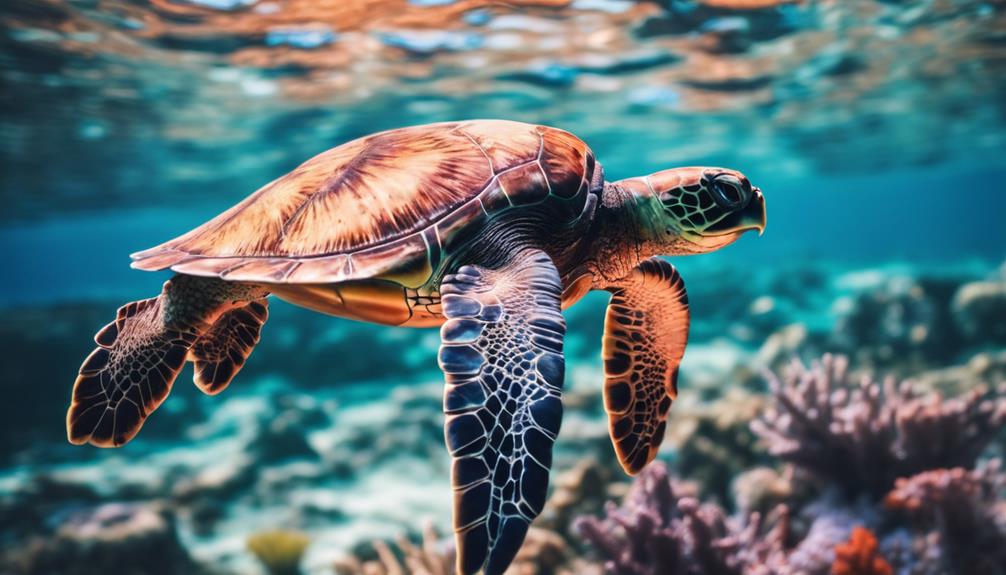Plunge into the world of sea turtles with these 15 awesome facts! From their 110 million-year evolution to their 100-year lifespan, sea turtles are true marvels. Their navigation skills, reproductive habits, and interactions with predators are fascinating. Flipper function, shell characteristics, and habitat range also play vital roles in their survival. Understanding these facts can help in conservation efforts. Explore these incredible creatures to discover more about the wonders of sea turtles.
Sea Turtle Evolutionary History
Did you know that sea turtles have a rich evolutionary history spanning over 110 million years, dating back to the time of dinosaurs? These ancient creatures have been around for an incredibly long time, with the oldest known sea turtle fossil dating back at least 120 million years. Over the millennia, sea turtles have evolved, adapting to the changing marine ecosystem while retaining key features like their iconic shells and powerful flippers.
Sea turtles are not just survivors of time; they are crucial players in maintaining the balance of the marine ecosystem. Their presence influences the health of seagrass beds and coral reefs, contributing to the overall biodiversity of the ocean. These magnificent animals showcase remarkable adaptations that have been honed over their long evolutionary history, making them perfectly suited for life in the ocean. Next time you see a sea turtle gracefully gliding through the water, remember that you are witnessing a creature with an ancient lineage and an essential role in the marine world.
Sea Turtle Lifespan
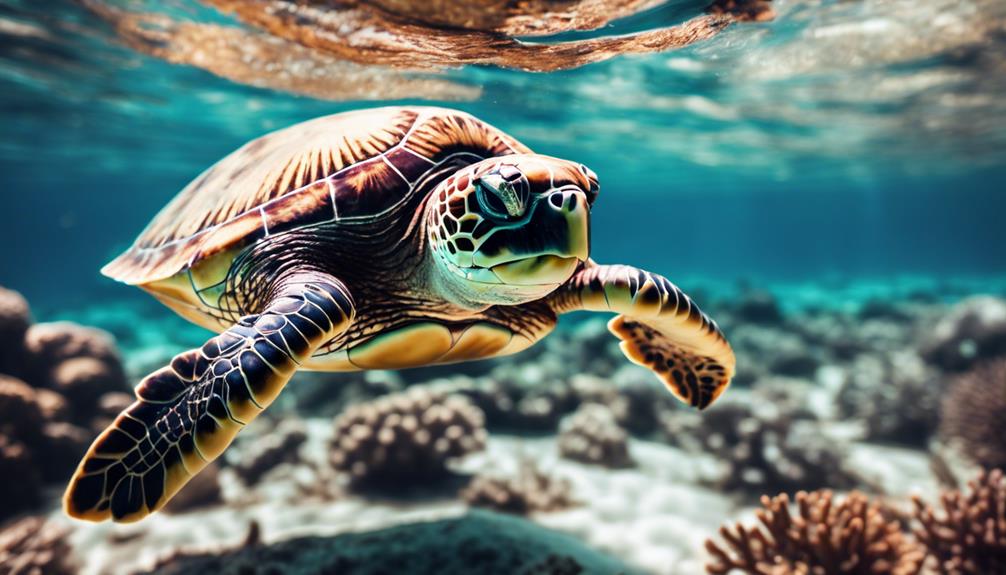
Sea turtles exhibit impressive longevity, with some individuals living up to 100 years and certain species surpassing even that remarkable age. Among them, leatherback sea turtles, the largest of all sea turtles, can live up to 50 years or more. These majestic creatures reach sexual maturity at around 10-20 years of age, though this varies between different species. Understanding the lifespans of sea turtles is vital for conservation efforts and ensuring their survival in the wild.
Sea Turtle Navigation Abilities
Sea turtles possess a remarkable ability to navigate through vast ocean waters with precision. Their internal GPS system, believed to guide them during migrations, helps them return to their birthplace for nesting. Magnetic particles in their brains allow sea turtles to interpret geomagnetic cues, aiding in their incredible navigation skills.
Remarkable Sea Turtle Navigation
Traversing the vast oceans with precision and efficiency, sea turtles showcase an impressive ability to rely on Earth's magnetic field for their remarkable long-distance migrations. These marine marvels navigate using geomagnetic cues, guiding them back to their natal beaches for nesting with incredible accuracy. Scientists suggest that sea turtles possess specialized cells in their brains, allowing them to detect and interpret magnetic fields, aiding in their extraordinary navigation skills. By understanding how sea turtles utilize Earth's magnetic field for navigation, valuable insights can be gained for conservation efforts and habitat protection. These ancient mariners demonstrate a profound connection to the planet's magnetic forces, enabling them to journey across oceans and inspiring conservationists to safeguard their critical habitats.
Oceanic Migration Patterns
Embarking on their extraordinary journeys across vast oceans, sea turtles exhibit unparalleled navigation abilities, depending on Earth's magnetic field for precise guidance. These majestic creatures migrate thousands of miles for breeding and feeding purposes, utilizing geomagnetic cues to navigate with astonishing accuracy. The capability of sea turtles to return to their birthplace remains a mysterious and captivating aspect of their migration behavior. By comprehending these migration patterns, conservation efforts can be strengthened to safeguard the critical habitats that sea turtles rely on for survival. It is truly remarkable how these ancient mariners traverse vast distances with such precision, showcasing the wonders of nature's navigation marvels. As we work to preserve their habitats, let us admire the sea turtles' innate ability to navigate the vast and untamed oceans.
Sea Turtle Reproduction

Setting out on an incredible journey, female sea turtles travel thousands of miles to lay their eggs on sandy beaches. Once they find the perfect spot, these amazing creatures dig a hole in the sand to deposit their eggs. The temperature of the sand during incubation plays a vital role in determining the sex of the sea turtle hatchlings. Warmer temperatures typically result in female hatchlings, while cooler temperatures lead to male hatchlings.
After mating in the shallow waters near their nesting beaches, female sea turtles store sperm from multiple males for fertilization during nesting. This unique ability allows them to guarantee successful fertilization even if they don't encounter another male during the nesting process. Once the eggs hatch, sea turtle hatchlings use Earth's magnetic fields for navigation, guiding them towards the ocean where they will begin their incredible journey of life. The reproductive behaviors of sea turtles are truly fascinating and highlight the marvels of nature's intricate processes.
Sea Turtle Predators

Do sea turtles have natural predators that pose significant threats to their survival in the wild? Absolutely. Sea turtles face various predators, with large sharks like tiger, bull, and great white sharks being some of the most prominent ones. Juvenile and smaller adult sea turtles are especially vulnerable to shark attacks. When female sea turtles come ashore to nest, they encounter predation risks from animals such as raccoons, foxes, and birds. Thousands of nesting sea turtles confront threats from predators during this critical time. It's important to note that predators like sharks play a vital role in shaping sea turtle populations and behaviors. Their presence influences where sea turtles choose to nest and how they navigate the waters. Understanding the dynamics between sea turtles and their predators is essential for conservation efforts aimed at protecting these magnificent marine creatures. Stay informed about the challenges sea turtles face in the wild to appreciate their resilience and the delicate balance of their ecosystems.
Sea Turtle Size Variability
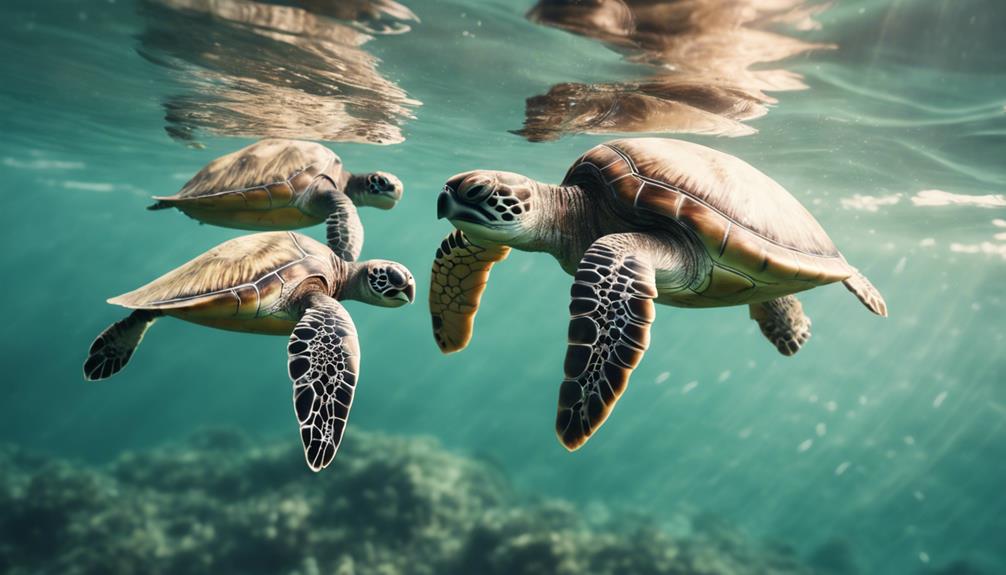
Sea turtles come in a wide range of sizes, from the colossal leatherback turtles to the petite Kemps and olive ridley turtles. These differences in shell size and growth rates contribute to the incredible size variability seen among various sea turtle species. Understanding these size variations is essential for implementing effective conservation measures tailored to meet the distinct needs of each species.
Shell Size Differences
Amidst the diverse world of sea turtles, the variability in shell size stands out as a remarkable feature, showcasing a wide spectrum of lengths across different species. From the colossal leatherback sea turtles that can exceed 2 meters in length to the petite Kemps ridley and olive ridley turtles that reach about 70 cm, the range is vast. Even extinct species like Archelon, with a minimum length of 4.6 meters, and Leviathanochelys aenigmatica, Europe's largest at 3.7 meters, demonstrate the fascinating diversity in shell sizes. These differences not only reflect the unique adaptations of each species but also provide insight into their evolutionary history, highlighting the incredible journey these marine marvels have undergone.
Growth Rate Variations
The remarkable variability in shell sizes among sea turtles hints at the intriguing growth rate variations these marine creatures exhibit. Leatherback sea turtles can reach lengths exceeding 2 meters, distinguishing them as the largest sea turtle species. In contrast, species like Kemps and olive ridley turtles typically grow to around 70 cm in length and 50 kg in weight. The extinct Archelon was a colossal species, capable of growing up to at least 4.6 meters long. Moreover, Europe's Leviathanochelys aenigmatica showcased a substantial body length of 3.7 meters, underscoring the diverse range of sea turtle sizes. From the tiniest living species to massive extinct ones, sea turtles exemplify significant growth rate variations, contributing to their fascinating nature.
Sea Turtle Breathing Capacity
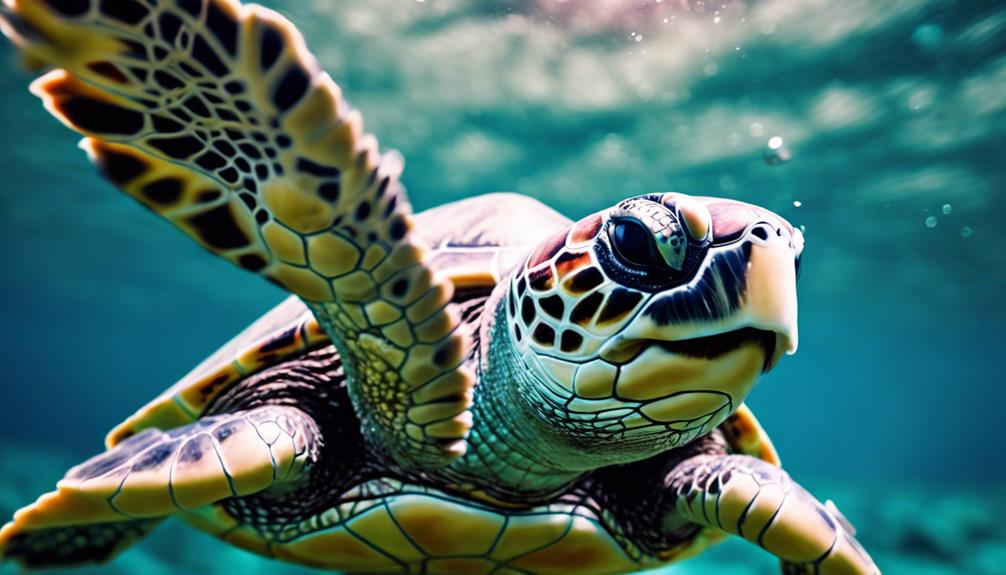
With their remarkable respiratory adaptations, sea turtles showcase an impressive breathing capacity that enables them to thrive in their aquatic habitats. Sea turtles can hold their breath for varying lengths of time, from 5 to 40 minutes, depending on the species, making them adept at foraging underwater. Some freshwater turtles have the unique ability to breathe underwater through their cloaca, showcasing their incredible respiratory adaptations. To conserve oxygen, sea turtles have a clever technique of quickly exhaling and inhaling at the surface before diving back down. Additionally, these marine marvels can sleep underwater for extended periods, ranging from 4 to 7 hours, by slowing down their heart rate. Through specialized respiratory adaptations, sea turtles have evolved to excel in their underwater world, demonstrating their exceptional ability to survive and thrive in the oceans.
Sea Turtle Conservation Status
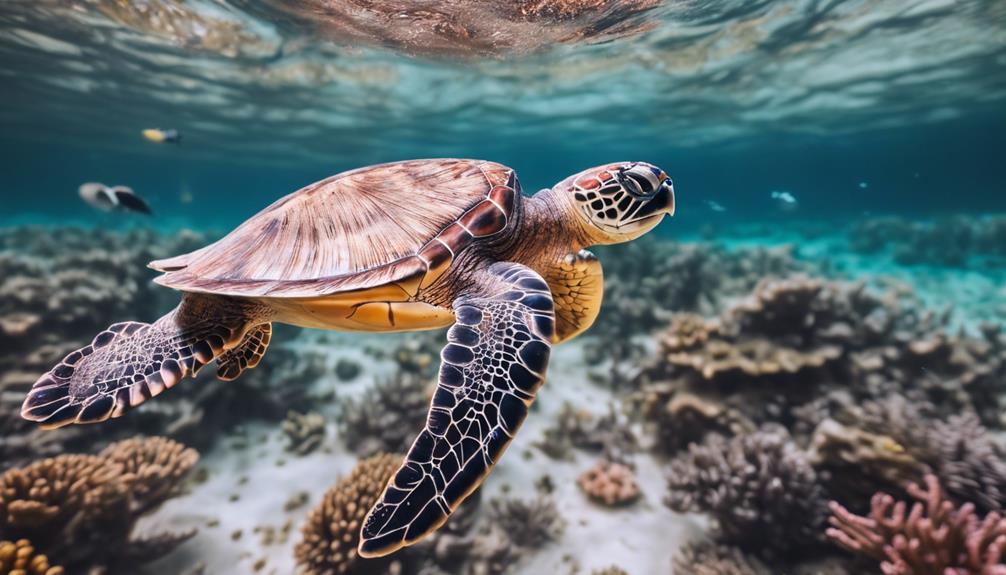
Sea Turtle Conservation Status remains a critical concern as all seven sea turtle species face the threat of extinction due to various human-induced factors. Plastics in the ocean are a significant contributor to the decline in sea turtle populations. These majestic creatures are threatened by fisheries bycatch, pollution, climate change, coastal development, and direct harvesting of eggs and meat. Conservation efforts play an important role in safeguarding sea turtles from these threats. Initiatives such as marine species protection programs, habitat restoration projects, biodiversity research, educational campaigns, and advocacy for sustainable practices are essential in ensuring their survival.
To combat these challenges effectively, collective action is essential. Community support is key to the success of conservation projects. By coming together, sharing knowledge, collaborating on initiatives, impacting policies, and advocating for marine protection, we can make a significant difference in the lives of sea turtles. Successful conservation stories highlight the power of united efforts and increased awareness about the threats faced by these incredible marine animals. By working together, we can create a brighter future for sea turtles and the marine ecosystems they inhabit.
Sea Turtle Migration Patterns
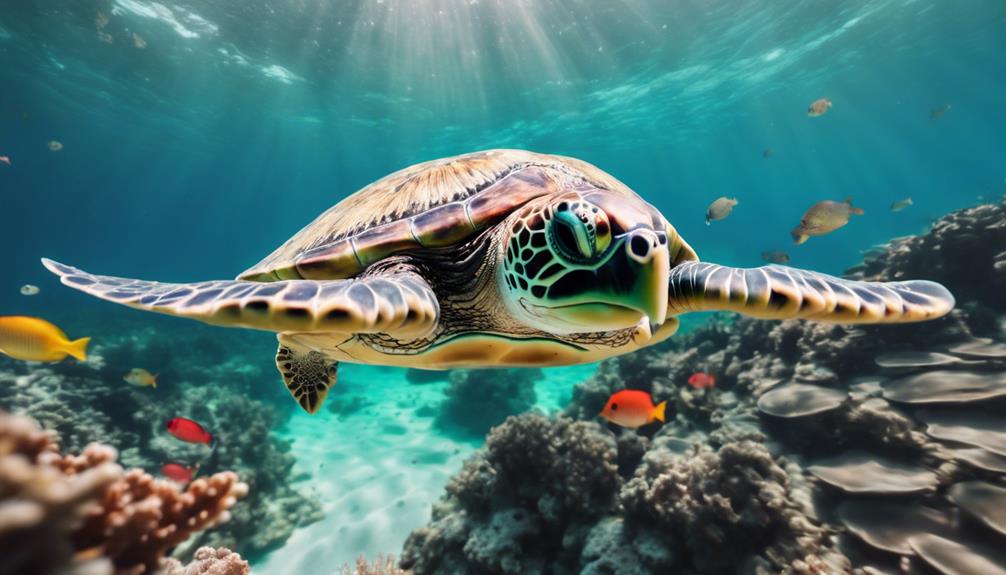
Sea turtles set out on amazing long-distance ocean travels, journeying thousands of miles between their feeding areas and nesting beaches. They possess a remarkable ability to navigate these vast distances by utilizing Earth's magnetic field as a guide. This migration behavior plays a crucial role in the survival of sea turtle populations, supporting essential activities like breeding and feeding.
Long-Distance Ocean Travels
Setting off on epic voyages spanning thousands of miles across oceans, sea turtles demonstrate remarkable migration patterns that play vital roles in their survival and ecosystem health. These long-distance ocean travels involve Leatherback turtles journeying over 10,000 miles annually, showcasing the farthest migrations among sea turtles. Migration serves essential functions for sea turtles, such as locating suitable nesting beaches and abundant food sources vital for their survival. Understanding sea turtle migration patterns is key to conservation efforts aimed at protecting their critical habitats, ensuring these majestic creatures thrive for generations to come. By relying on Earth's magnetic fields for navigation, sea turtles navigate the vast oceans with astonishing precision, a marvel of nature worth preserving.
Navigating Using Earths Magnetism
Setting off on their extraordinary migrations, sea turtles utilize Earth's magnetic field as a navigational tool, directing them with impressive precision across vast ocean expanses. Through a remarkable ability known as magnetoreception, these fascinating creatures can sense geomagnetic cues, guiding them back to their nesting beaches with astonishing accuracy. This innate magnetic navigation system plays a pivotal role in shaping sea turtle migration patterns, allowing them to traverse thousands of miles with ease. Imagine having a built-in natural compass that leads you home no matter how far you roam in the open ocean; that's the incredible journey sea turtles undertake, relying on Earth's magnetic field as their guiding light. It's truly a marvel of nature to witness these majestic sea creatures navigate the seas using such a unique and significant sense.
Sea Turtle Nesting Behavior
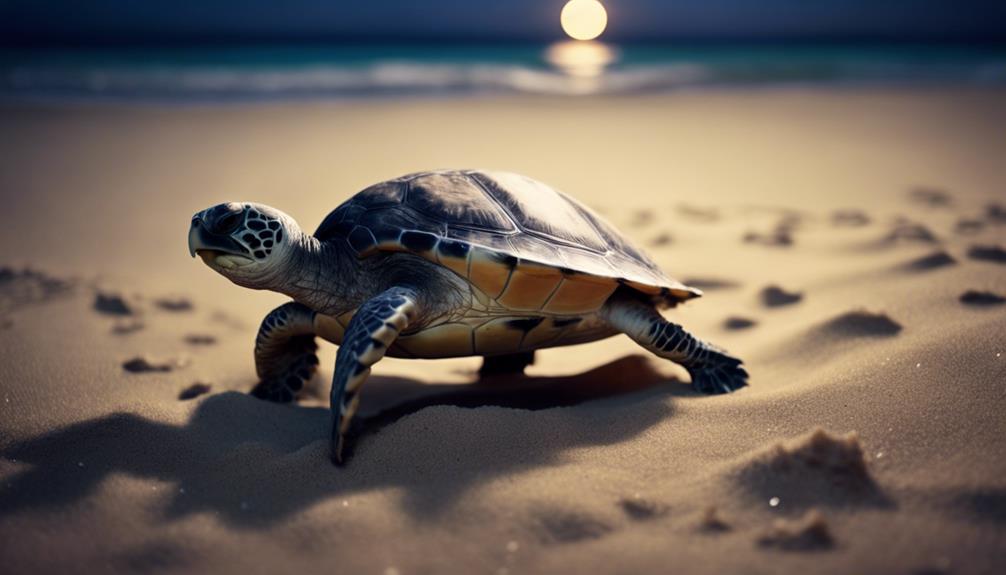
During the nesting season, female sea turtles exhibit remarkable behavior as they return to the beaches where they were hatched to lay their eggs. This journey is filled with challenges, from evading predators to guaranteeing the survival of their hatchlings. Here are some fascinating insights into sea turtle nesting behavior:
- Migration: Female sea turtles travel immense distances, sometimes thousands of miles, to reach the same beach where they were born.
- Sex Determination: The temperature of the sand plays an essential role in determining the sex of sea turtle hatchlings, showcasing nature's intricate mechanisms.
- Innate Navigation: Hatchlings are born with the remarkable ability to navigate by sensing Earth's magnetic fields, aiding them on their journey to the ocean.
- Survival Struggles: Predators like birds and fish pose a significant threat to baby sea turtles, making it a challenging task for the hatchlings to reach the safety of the water.
Witnessing these nesting behaviors highlights the resilience and determination of female sea turtles as they work to guarantee the next generation's survival.
Sea Turtle Physical Features
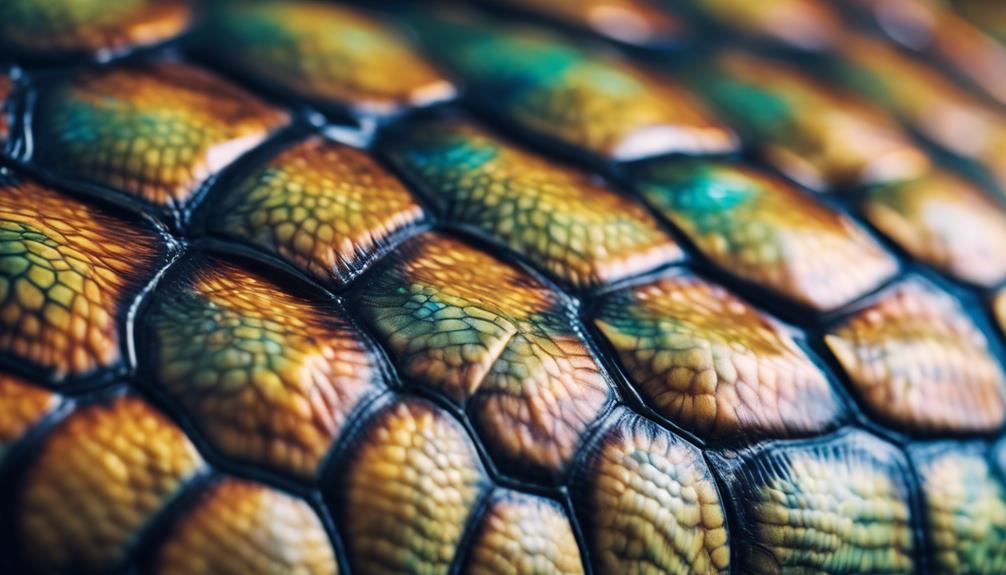
Female sea turtles, known for their incredible nesting behavior, possess distinct physical features that contribute to their survival in their oceanic habitats. These magnificent creatures have shells made of bone or tough, leathery skin, providing them with essential protection and support. Being ectotherms, sea turtles rely on external heat sources to regulate their body temperature, adapting to the varying ocean environments they encounter. Their impressive swimming ability allows them to glide through the water at speeds reaching up to 35 km/h, showcasing their agility and grace. Equipped with the remarkable capacity to hold their breath for extended periods, typically between 5-40 minutes while foraging, sea turtles are well-suited for underwater life. Additionally, some species of freshwater turtles exhibit unique respiratory adaptations, such as breathing through their cloaca, further highlighting the fascinating diversity of these marine marvels.
Sea Turtle Flippers Function
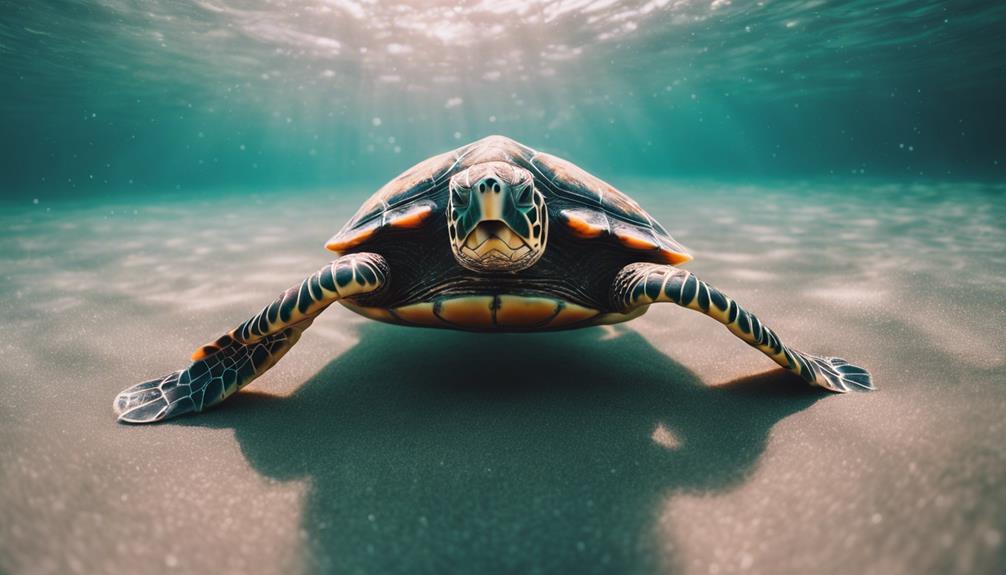
Sea turtle flippers are not just limbs; they're like perfectly designed paddles for aquatic adventures. These specialized tools let sea turtles glide through the water effortlessly, thanks to their streamlined shape and powerful muscles. Their flipper structure minimizes resistance, making swimming seem almost effortless for these incredible ocean travelers.
Flipper Structure and Design
With their streamlined shape and elongated digits, sea turtle flippers are finely tuned for efficient swimming and maneuvering in the ocean. These specialized limbs are a marvel of nature, perfectly adapted to life in marine habitats. Here are some key points about sea turtle flipper structure and design:
- Sea turtle flippers have a streamlined shape that reduces drag and allows for swift movement through the water.
- The elongated digits provide increased surface area for propulsion, aiding in the turtle's speed and agility.
- The bones within the flippers are modified for strength and flexibility, enabling powerful strokes for navigation and foraging.
- The design of sea turtle flippers not only facilitates long-distance migrations but also helps these creatures escape predators effectively.
Flippers for Swimming
Efficiently propelling themselves through the ocean depths, sea turtles rely on their specialized flippers, finely tuned for swimming and maneuvering in their marine environment. Sea turtle flippers are not just ordinary limbs; they are powerful tools that enable these majestic creatures to navigate the vast oceans with grace and speed. The streamlined shape of their flippers reduces drag, allowing for efficient propulsion and precise steering. These specialized limbs are essential for sea turtles to hunt for food, escape predators, and cover long distances during migrations and nesting activities. Witness firsthand the incredible capabilities of sea turtle flippers in the table below:
| Specialized Limbs | Efficient Swimming | Streamlined Shape |
|---|---|---|
| Propulsion | Steering | Powerful Flippers |
Sensory Function in Flippers
Revealing a lesser-known facet of sea turtle flippers, their sensory functions play an essential role in exploring the underwater world with accuracy and mindfulness. Sea turtle flippers provide more than just propulsion; they serve as sophisticated sensory tools for these marine marvels. Here's what makes them truly remarkable:
- Sensory functions enable sea turtles to sense vibrations, pressure changes, and water movements.
- The flexibility and shape of the flippers aid in propulsion and stability during swimming.
- Nerves in the flippers help sea turtles feel their environment, locate prey, and navigate the ocean.
- Their sensitivity to touch and temperature changes enhances interactions with the surroundings, making sea turtles highly adaptable in their marine habitat.
Sea Turtle Shell Characteristics
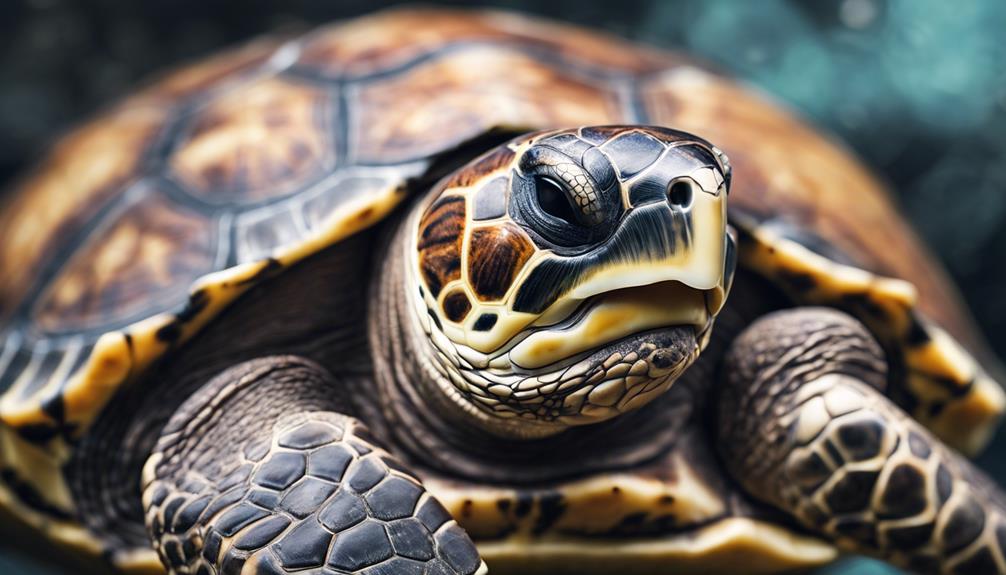
Sea turtle shells, whether made of bone or tough, leathery skin, play an essential role in providing protection and support for the turtle's body. These shells come in various colors, sizes, and durability across different sea turtle species. The unique structure of the shell not only offers protection but also helps in maintaining buoyancy, enabling sea turtles to swim swiftly through the water.
Female sea turtles rely on their shells to safeguard and incubate their eggs during the nesting process on sandy beaches. Additionally, the distinct patterns and scutes on sea turtle shells serve as identification markers, aiding researchers in tracking and studying individual turtles for conservation purposes. By understanding the shell characteristics and unique patterns of sea turtles, conservation efforts can be enhanced to protect these magnificent creatures for future generations to enjoy. So next time you see a sea turtle gliding gracefully through the ocean, remember the important role its shell plays in its survival and well-being.
Sea Turtle Egg Grouping

As we shift from exploring the intriguing characteristics of sea turtle shells, let's now explore the enchanting process of how female sea turtles group their eggs in sandy nests on beaches. Female sea turtles carefully arrange their eggs in clutches, with each nest containing anywhere from 50 to 200 eggs. The way these sea turtle eggs are grouped together is important for their survival and hatching success.
- The temperature of the sand during incubation plays a significant role in determining the sex of the sea turtle hatchlings.
- The grouping of sea turtle eggs in nests helps protect them from predators and environmental factors.
- Each clutch of sea turtle eggs is meticulously covered by the female to guarantee their safety.
- The arrangement of eggs in nests is a crucial part of the nesting process and influences the overall success of the hatchlings' development.
Understanding how sea turtles group their eggs in nests provides insight into the intricate and essential aspects of their reproductive behavior.
Sea Turtle Habitat Range
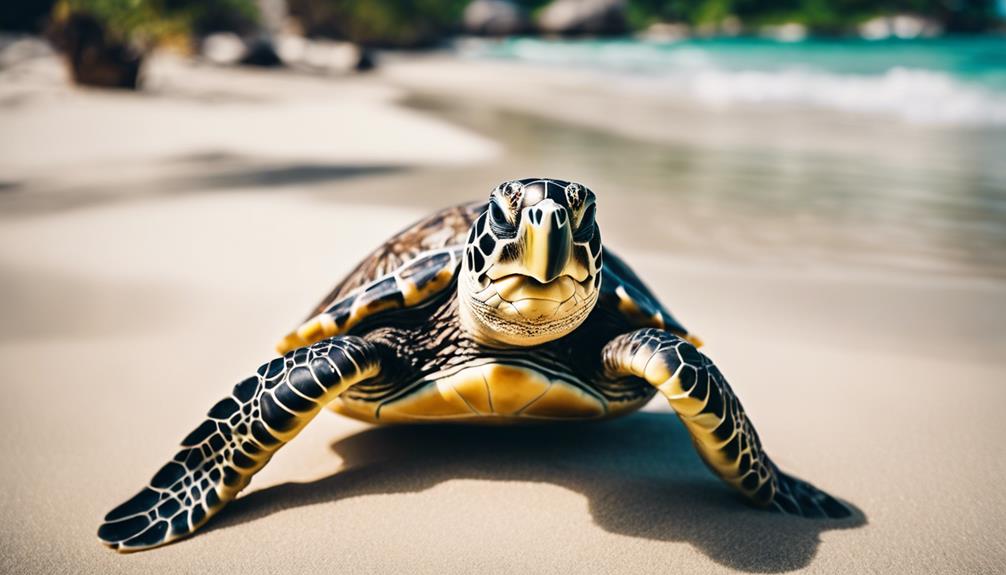
Nesting along sandy shores, sea turtles establish their habitat range in diverse oceanic environments, displaying remarkable adaptability and resilience to varying conditions. These fascinating creatures can be found in all oceans except the polar regions, with a wide global distribution spanning tropical and subtropical waters. Leatherback turtles, known for their impressive size, venture into deep ocean waters, traveling long distances for feeding and nesting. In contrast, green sea turtles prefer shallow coastal areas abundant in seagrass and algae, essential for their herbivorous diet. Loggerhead sea turtles, commonly sighted in the Southeastern United States, rely on nearshore habitats for foraging and nesting activities.
Critical habitats such as coral reefs play a significant role in the survival of sea turtles, offering food sources, shelter, and essential nesting sites. These unique creatures have adapted to various marine environments, showcasing their resilience and ability to thrive in different parts of the world's oceans.
Conclusion
To sum up, sea turtles are truly remarkable creatures, with a history that spans millions of years. Their long lifespan, incredible navigation abilities, and unique reproductive methods make them a marine marvel. Despite facing challenges from predators and habitat loss, these gentle giants continue to swim the world's oceans with grace and resilience. So next time you see a sea turtle, remember the amazing facts you've learned and appreciate the beauty of these ancient creatures. Keep on swimming, sea turtles!
